Cost of living in Bali as a digital nomad
Cost of living in Bali, Indonesia as a digital nomad in October 2022
Are you wondering how much it would cost to live in Bali for a few weeks, or even months?
I had the pleasure of living in Bali, Indonesia for 3 months as part of my digital nomad journey around Southeast Asia. And I kept track of all of my spending (literally ALL of it!). From credit card charges to cash spending, I made sure to document how much each meal, shopping, accommodation, transportation, and everything in between costs. Mostly as a way to keep track of my spending and budget while living abroad, but also to be able to share my experience and knowledge with you.
Obviously, each person would probably spend different amounts based on their habits. But as a budget traveler, living off of my savings, and traveling slowly around the country, I tried to spend as little as possible but still be able to sightsee, eat delicious meals and enjoy my life abroad.
Although I technically spent 3 months in Bali, I traveled outside of Bali in September and November, so I’m only sharing my spending during the month of October while living in Canggu, which was the most accurate representation of living in Bali.
I separated my spendings into 10 categories. Some of these categories are everyday spendings, and some are things I spent extra money on or aren’t really a cost of living. Below the table, I explain each one in more detail.
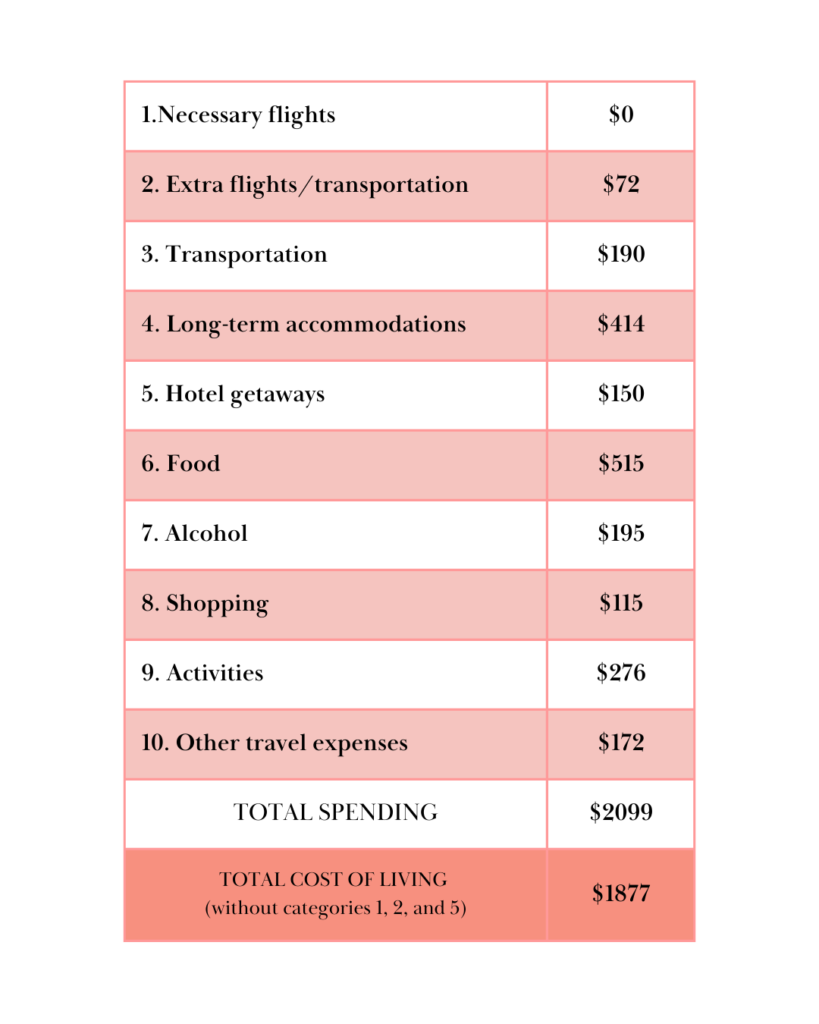
Necessary flights- $0 USD
After living in Vietnam for 2 months, I took a one-way flight from Ho Chi Minh City to Bali for $114 USD in early September. But because this cost of living is based on my October spending, I technically didn’t need to spend any money on flights in October since I was already in Bali.
This flight cost is definitely gonna vary depending on where you’re coming from and if you’re only buying a one-way ticket or a round-trip flight. So I don’t really count it as a cost of living. But I still add this category to keep track of how much I’m spending on flight tickets from one place to another, which IS a necessary cost nonetheless.
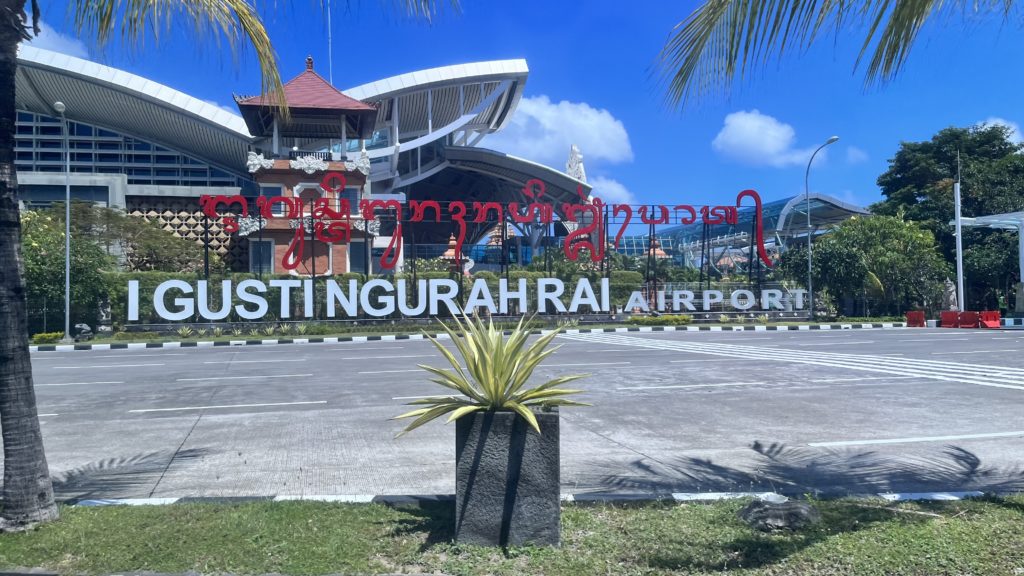
Extra flights/transportation – $72 USD
While in Bali, in October, I visited the nearby islands of Gili Meno and Gili Trawangan by speedboat which came out to $72 USD total between 3 speedboats. Other than that, I mostly explored the main island of Bali.
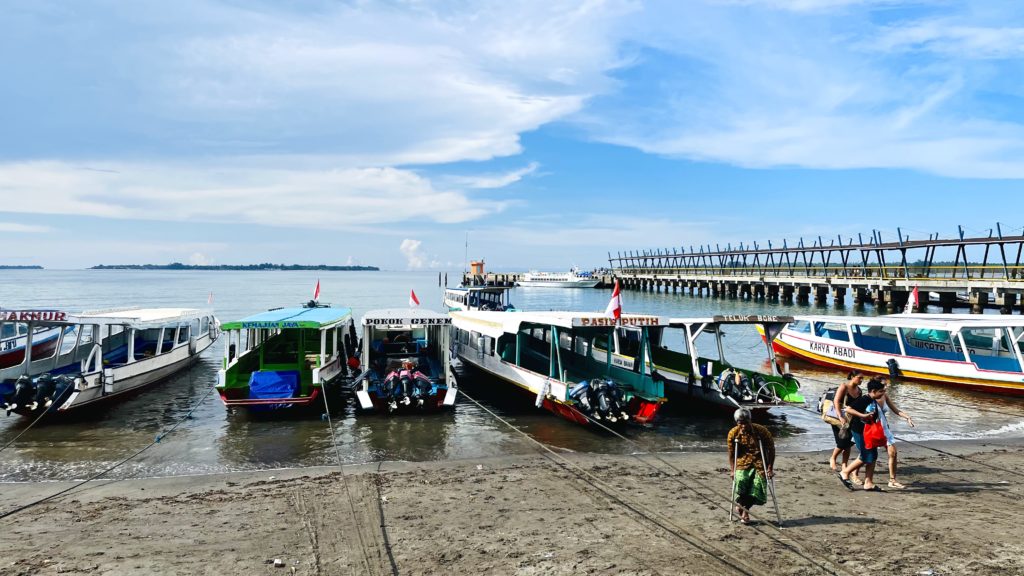
Transportation – $190 USD
I tend to walk a lot in the cities I live in. Partly to save some money on my transportation costs, but also because I find it the best way to get to know a city or town. But when I want to venture a little farther, I definitely spend most of my money on Grab taxis. Grabs are basically the Ubers of southeast Asia.
So most of my spending in this transportation category went on visiting places that were 1 to 2 hours away from Canggu, where I was staying. In October, I visited the town of Ubud twice, had to take a trip to the immigration office, went to the airport to pick up a friend who visited me, and spent a day beach hopping in Uluwatu. So all that really added up. Luckily I got to split some of those costs with friends, otherwise, it would’ve been an even higher spending.

Long-term accommodations – $414 USD
Long-term accommodations are the hotels or Airbnbs I stay at for most of the time I’m in a city. In this case, I stayed at a hotel/apartment complex called New Mandurah (through Airbnb) in Canggu. The accommodation was around a 10-minute walk to the beach, and close to plenty of restaurants and mini markets.
I booked it for 33 nights, and my experience was very positive. The guys that work there were very respectful and helpful, the host was very quick to respond to any issues, they provided full housekeeping services, and it had one of the best internet connections to date. This long-term accommodations expense will vary depending on the type of place you stay at (like staying at a hotel, apartment, or a hostel) and if you’re sharing the cost with someone else.
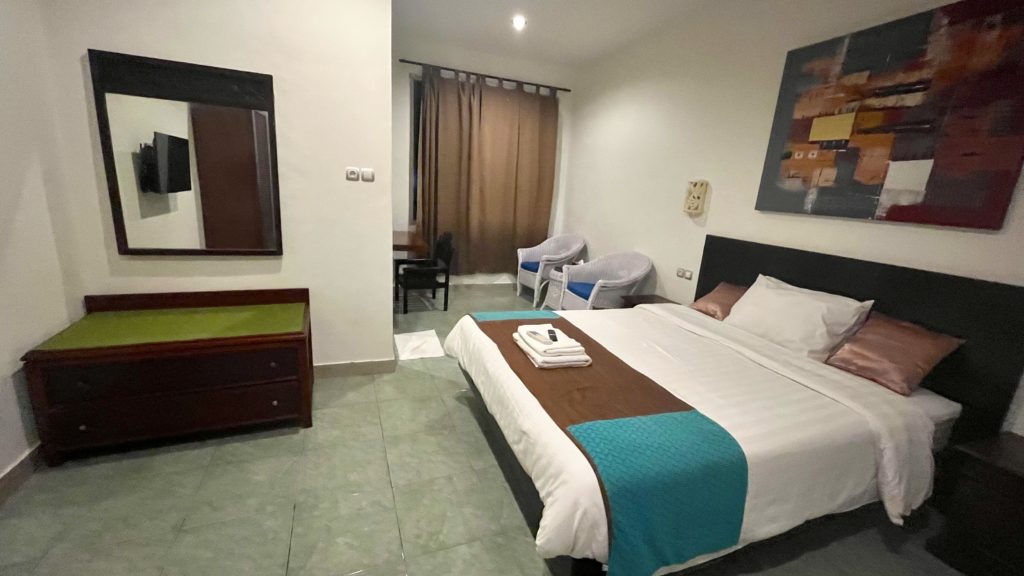
Hotel getaways – $150 USD
While in Bali, in October, a friend came to visit me and I wanted to explore some new places I hadn’t visited yet. So we booked a very nice bamboo bungalow near Ubud for 2 nights, and stayed at hotels on the islands of Gili Meno and Gili T for one night on each island. Because there were 2 of us staying, this hotel getaway spending is only my half of the total cost.
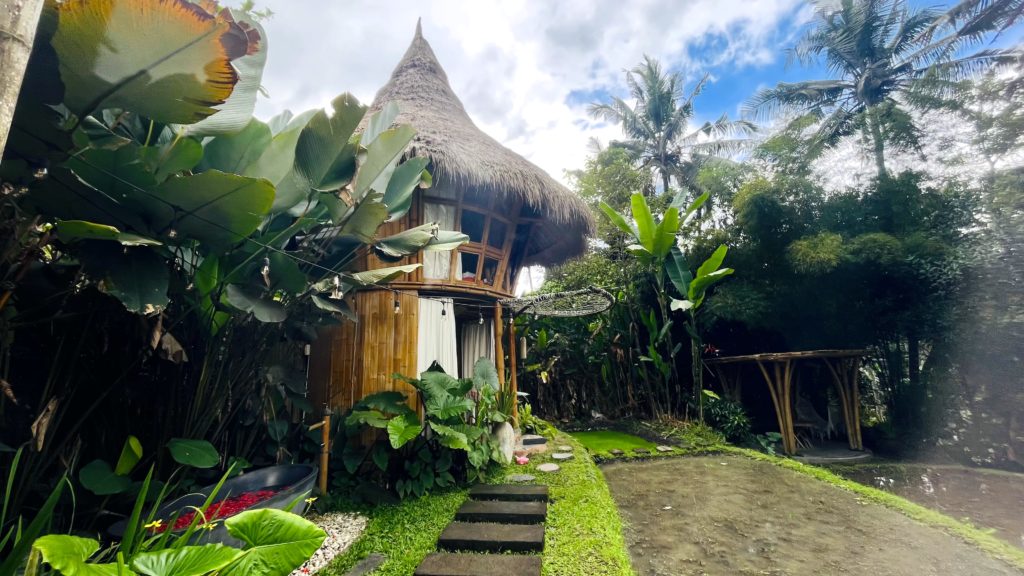
Food – $515 USD
Food is definitely one of my biggest expenses but definitely a necessary one. I try to eat as much local food as possible, and I sometimes try to go for something “cheap” from the menu. But other times I would just get what I want regardless of the cost. With that being said, the average cost of my meals was around Rp 120,000 [$8 USD], with most of them not surpassing Rp 200,000 [$13 USD].
Part of this cost also includes a few beers or cocktails I would have with my meal, as well as non-alcoholic drinks like water, coffee, and smoothies. This cost also takes into consideration that the area of Canggu is a little more expensive than other more rural or secluded areas in Bali. Restaurants here tend to be a bit more westernized and as such, more expensive.
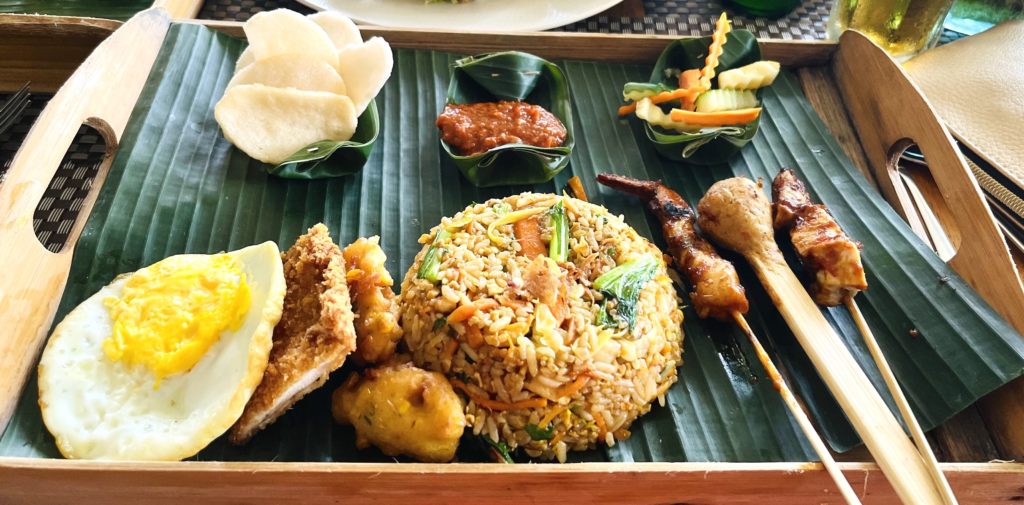
Alcohol – $195 USD
As I mentioned in the food category, some of the alcohol costs were just added to the full meal and not individually. But whenever I would go out for just a drink or actually documented the alcohol cost separately, I added it to this category. Alcohol in Bali is significantly cheaper than in the US but definitely more expensive than in other Southeast Asian countries. Most cocktails are around Rp 100,000 [$6.50 USD] and local beers go for around Rp 30,000 [$2 USD]. Normally my alcohol spending is pretty low, but because I had friends visiting me this month I definitely spent a bit more going out and stuff.
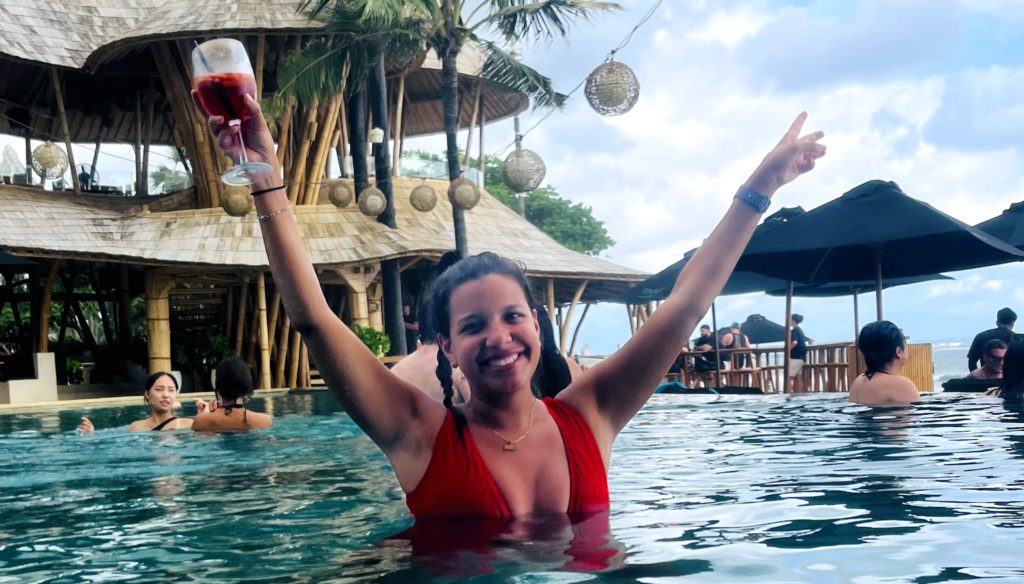
Shopping – $115 USD
My shopping expenses mostly came from souvenirs, toiletries, and local clothing items and accessories. Since I’m aware I have limited space in my suitcase I don’t go too crazy with my shopping. Mostly I bought necessary things like toilet paper, shampoo and conditioner, feminine products, and snacks. But also a few tops and dresses, and quite a few souvenirs for friends (and myself).
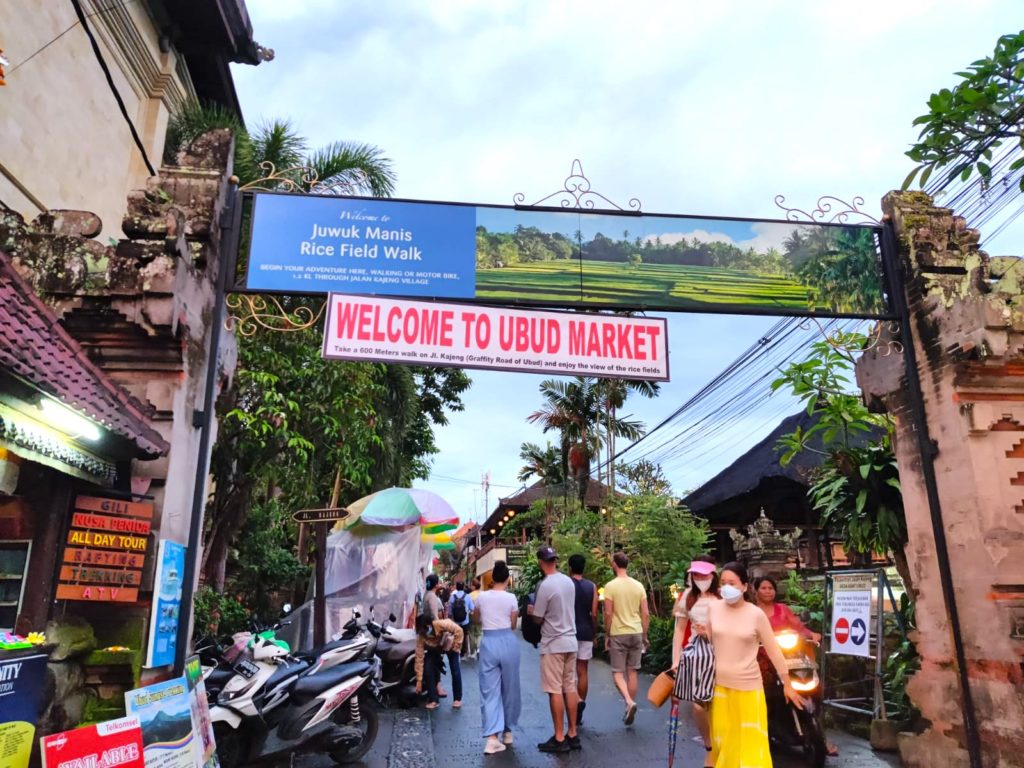
Activities – $276 USD
This was my highest Activities spending during my 9 months in Southeast Asia. I spent the most money on massages (including a 4-hour day spa treatment for $68 USD), a private tour around waterfalls, entrance tickets to different places, and even a surfing lesson. There’s a LOT to do and see in Bali, and even though nothing is super expensive, it’ll definitely add up.
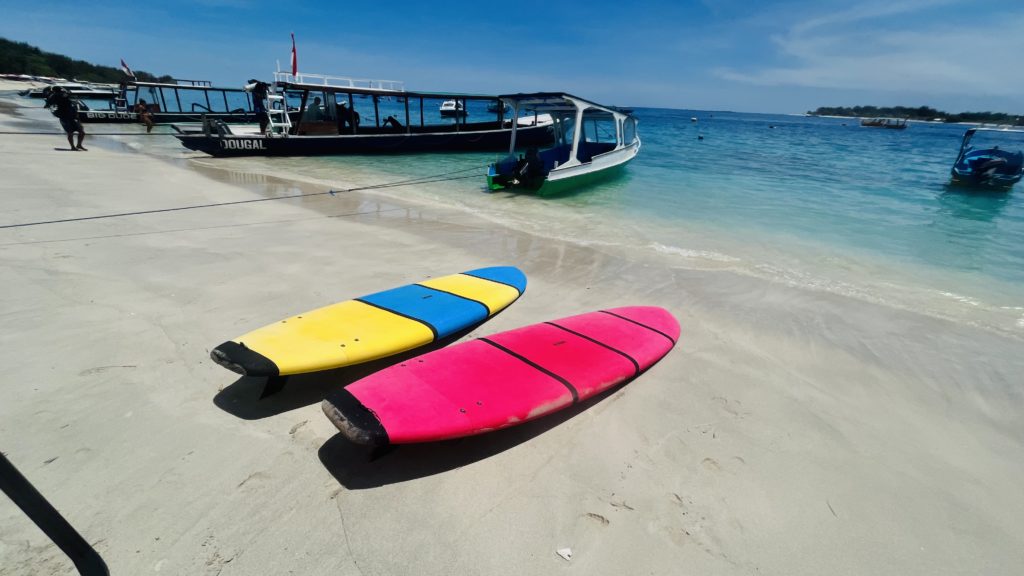
Other travel expenses – $172 USD
This category is for everything else I spent money on while in Bali during October, or travel-related recurring monthly payments I have to make regardless of where I am. These include things like my travel medical insurance, phone and internet data, laundry, and visas. This month in particular I had to pay to get my visa extended and that came out to $75 USD.
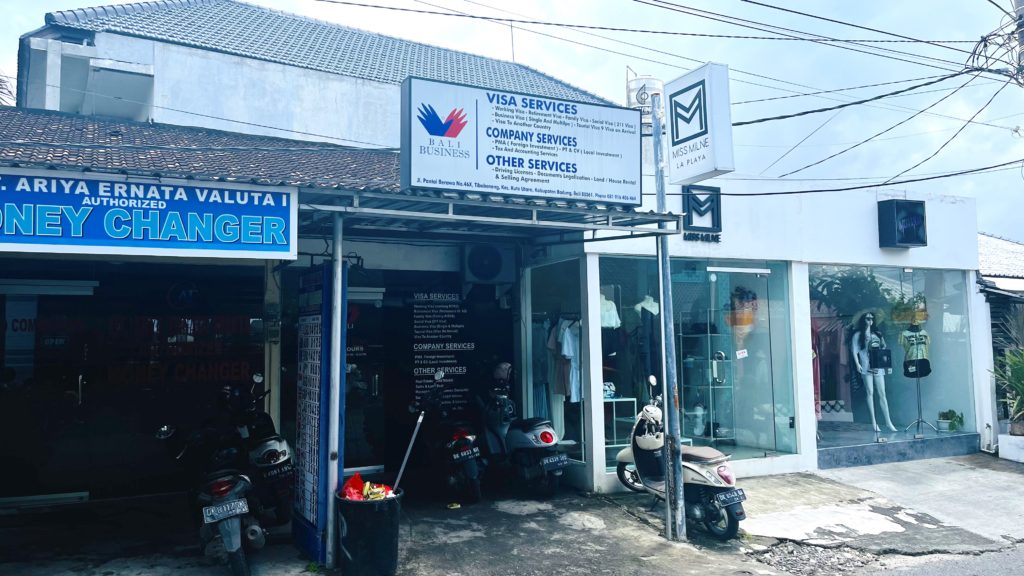
So, without adding the extra transportation expenses, nor the extra accommodation expense in Ubud and Gili Islands, my cost of living in Bali during October comes down to $1877 USD for 31 days, or around $60 USD per day.
And my total spending while in Bali, Indonesia in October came out to $2099 USD.
Found this post useful? Do you have any questions about the cost of living in Bali?
Let me know in the comments below!
Heads up: As a way to earn passive income, this post may contain affiliate links. This means that if you buy something through one of those links, I might get a commission at NO extra cost to you. I appreciate your support! 💕
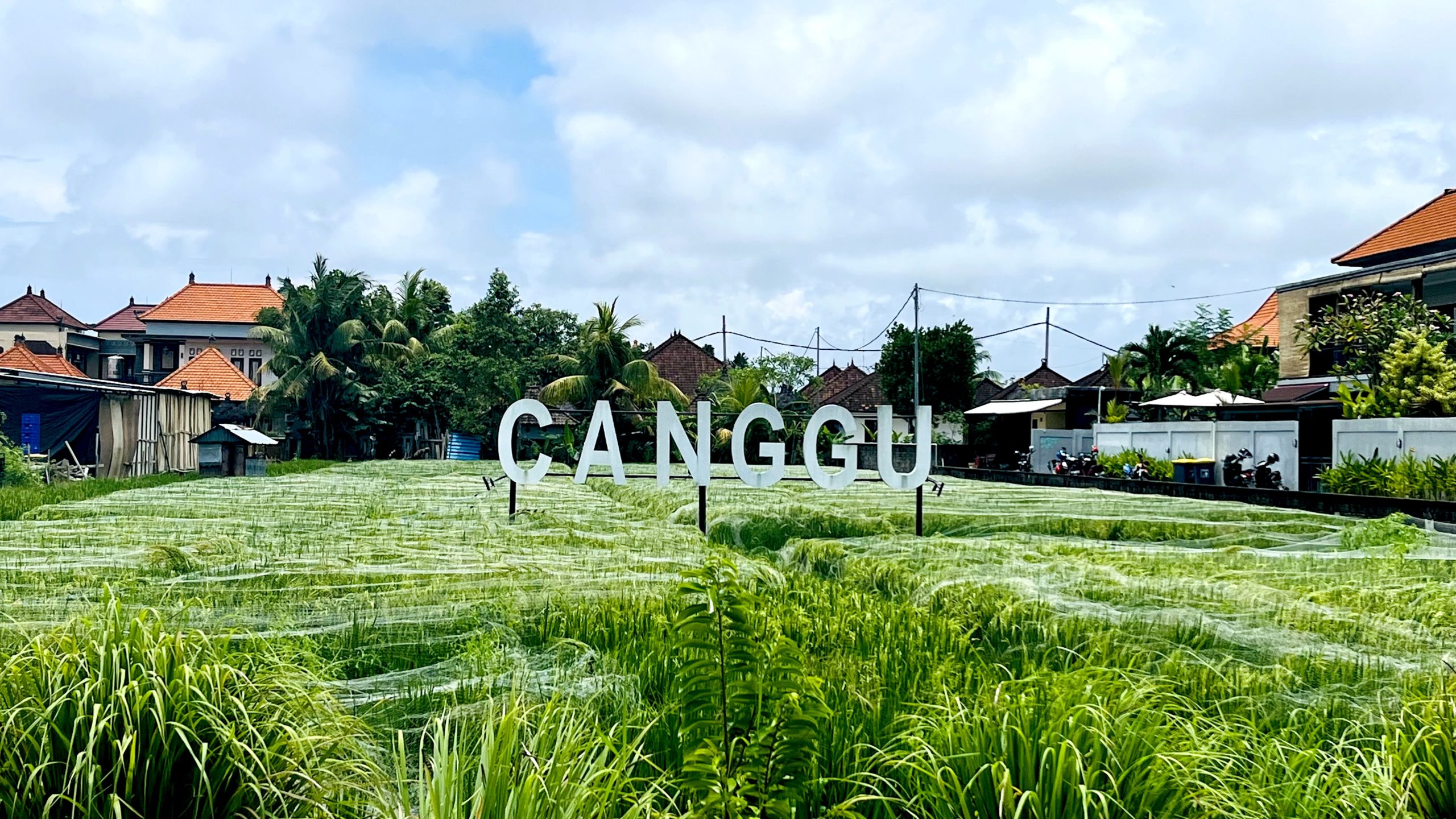
March 2, 2023
[…] And if you want to learn more about the cost of living in Bali and my experience living there for 3 months, check out the blog: Cost of living in Bali as a digital nomad […]